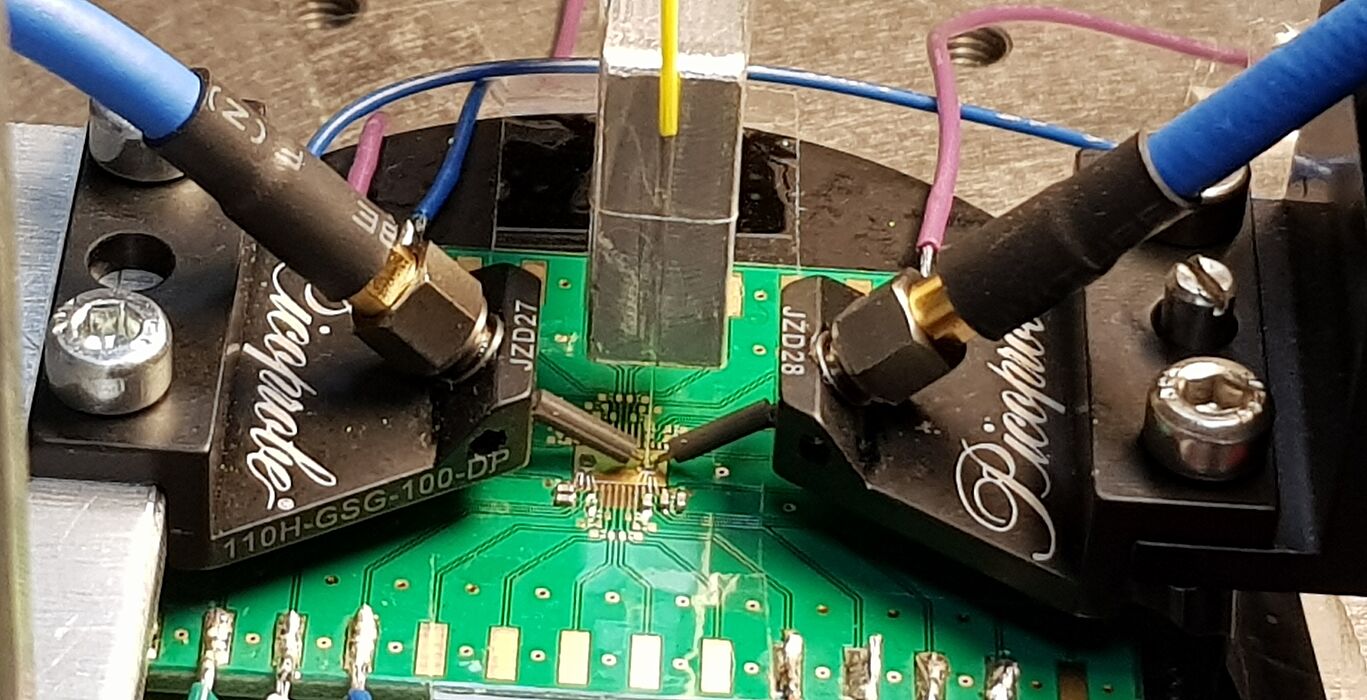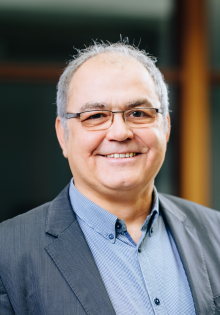Transmitting and networking data are key processes in times of digital transformation. Ever-increasing volumes of data are placing greater demands on transmitters and receivers. To achieve faster transmission speeds over greater distances, photonics relies on light signals instead of electrons and wires. Based on this method, scientists from Paderborn, Aachen, Karlsruhe and Hamburg have developed the world's most precise and fastest so-called "sample-and-hold" circuit. They are thus paving the way for future use of this technology in particularly demanding areas of work and research.
The German Research Foundation (DFG) is funding the "Ultrawideband Photonic-to-Electronic Analog-to-Digital Converter" (PACE) project, which started in 2019, with around 2.9 million euros as part of the Priority Program "Integrated Electron-Photonic Systems for Ultrawideband Signal Processing" (SPP 2111). Scientists led by Prof. Dr.-Ing. Christoph Scheytt from the Institute of Electrical Engineering and the Heinz Nixdorf Institute at the Paderborn University, as well as researchers from RWTH Aachen University, the Karlsruhe Institute of Technology and the University of Hamburg are involved. Funding was recently extended by three years to 2024.
Powerful and energy-efficient data transmission
In photonic data transmission, information is transmitted by optical signals from a transmitter to a receiver. Once there, the signal, i.e. the light or its different colours, is measured in terms of a physical quantity (intensity). Complex circuits establish the connections between the transmitter and receiver. Fast circuits for signal acquisition can therefore only be developed if measuring devices with a particularly high level of precision also exist. As the scientists of the "PACE" project have now investigated, this is possible through the use of photonics in combination with already proven silicon-based semiconductor technologies.
In addition to increased performance, silicon photonics brings other benefits. "Light-based electronic systems can reduce the impact on the environment and climate by consuming significantly less energy during data transmission. In addition, the circuits also enable hardware solutions for completely new applications, for example in medical technology or for autonomous vehicles," explains Maxim Weizel, a research associate in the "Circuit Technology" group at the Heinz Nixdorf Institute in Paderborn headed by Scheytt.
Second project phase targets overall system
After the research group worked primarily on developing various components in the first project phase from 2019 to 2021, the focus in the second funding phase from 2022 to 2024 will be on integrating the individual components into a compact overall system. The scientists' goal is to be able to record signals with a bandwidth of up to 400 gigahertz and thus advance the state of research in extremely precise signal recording.
Within the SPP 2111 coordinated by the Paderborn University, a total of eleven projects cover various research fields related to electronic-photonic signal processing. The teams want to explore circuits, develop corresponding algorithms and thus also shift the research focus of integrated photonics and device physics towards a circuit and system perspective.



